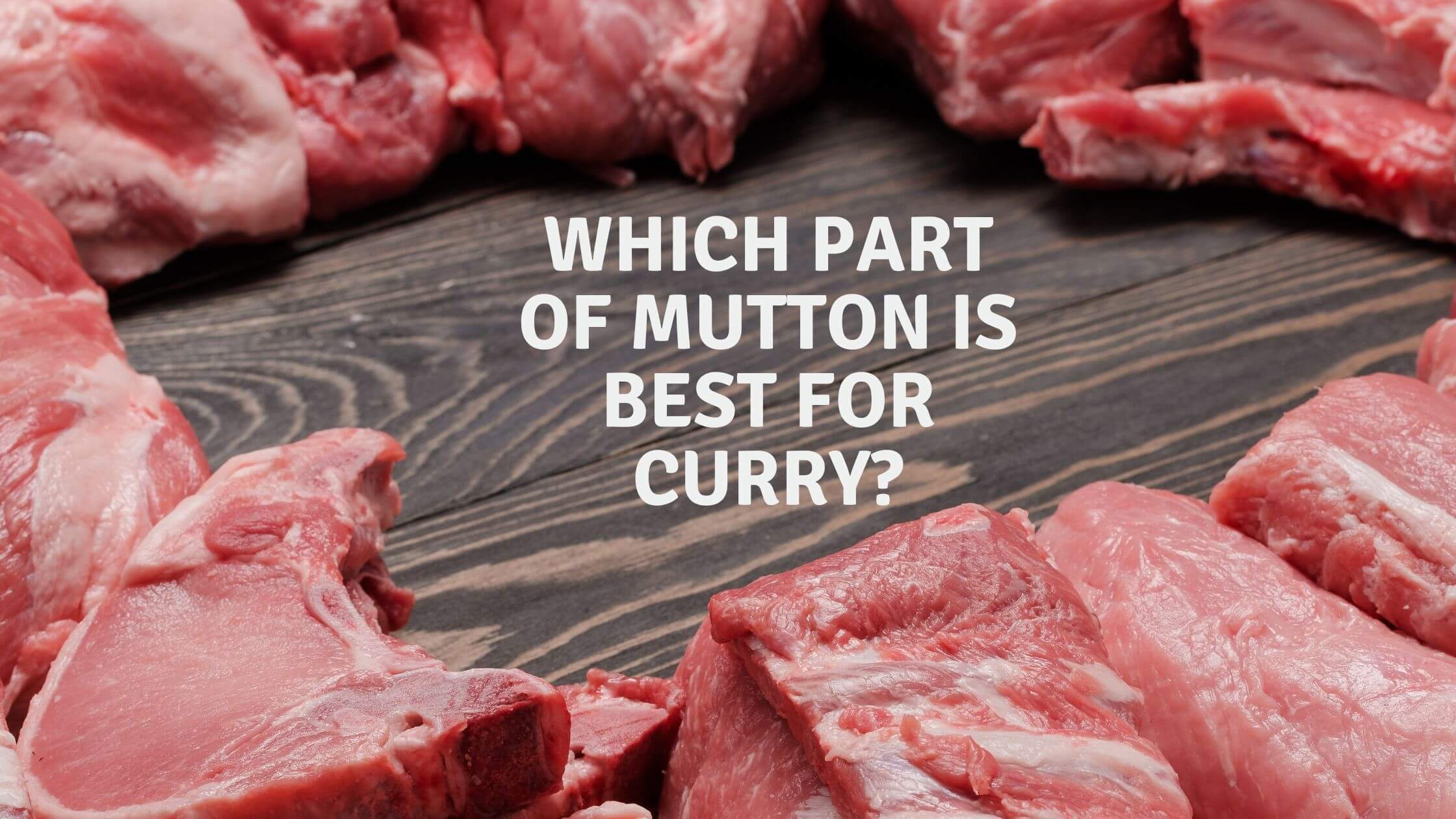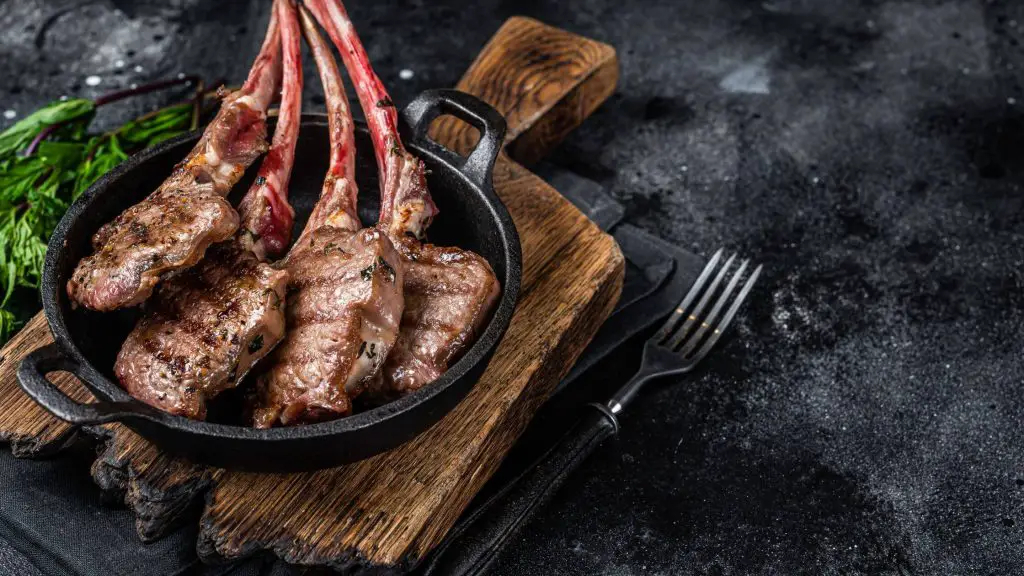Which Part of Mutton Is Best for Curry

Mutton curry is a culinary masterpiece that crosses ethnic barriers. This staple dish has made a special place in many Asian homes and its people’s hearts due to its delightfully fragrant and rich taste. Choosing the right kinds of mutton meat could be a deal breaker when it comes to perfecting the taste of your mutton dish.
So, which part of mutton is best for curry?
The meat cuts you use for your curry play a significant role in your cooking style and how long it can take to cook. Meat from the back leg of a sheep is a fantastic meat cut for a curry. Other options can include cuts from the shoulder and neck. You can mix different parts of the mutton or go for boneless pieces if you want the mutton to melt in your mouth.
The history and intricacy of mutton curry depict an enticing voyage of tastes that have been enjoyed through time in different cultures. Join us as we investigate the fascinating cuts of mutton, mutton’s nutritional value, and ways to make mutton tastier, softer, and juicer.
Which Part of Mutton Is Best for Curry?
Some mutton lovers prefer using meat from the leg or especially the back leg. On the other hand, others may say mixing mutton pieces from different parts would make the curry even more delicious.
When it comes to cooking tasty mutton curry, renowned chefs and culinary experts love to vouch for mutton pieces with bones. However, if you are a fan of boneless meat, just like me, you must go for boneless mutton cuts. You will enjoy a mouth full of boneless mutton delicacy served with roti or rice.
The neck and shoulder part also holds the title of being the most popular part of mutton for mutton curry in its name.
Are you feeling confused about selecting the perfect mutton cut for your dish? Let me take you on a tour where you will discover more about all the meat parts of a goat, and you will have the liberty to choose it for yourself.
All you need to know about Different Cuts of Mutton

The “best” cut of mutton for a curry is ultimately a question of taste. While some individuals favour the leanness of leg meat, others prefer the richness of slow-cooked shoulder meat. Consider experimenting with several cuts to see which one you prefer using in your curry dishes.
Here you can learn more about the cuts and pieces of mutton to choose from for your next mutton curry dish:
Mutton Leg
Meat cut from the back leg of a sheep or goat is known as “mutton leg meat,” and it is an excellent choice for mutton curry. The leg of the mutton is leaner and full of flavor. The best thing is you can get it in boneless form or with bones as well. It might require a slow cooking process, but in the end, the curry will be worth the wait.
Mutton Shoulder
The shoulder of a goat is filled with powerful muscle, as you might expect. This part of goat meat delivers amazing flavor and holds a special place in mutton lovers’ hearts. Slow simmering causes the meat’s connective fibers to disintegrate into the sauce, giving your food that crucial melting texture and deeply flavorful gravy. The marrow will impart the most flavor when used with a bone-in mutton shoulder. Just like the leg meat, it will test your patience. If you only have a few hours, this is the cut for you.
Mutton Rump Steaks
If you hear this term for the first time, let me clear the air for you, it’s a muscle taken from the back leg of a goat. If you roast and rest it for a while, it will be soft and an excellent source flavor. On top, there is a layer of fat and skin that, when cooked, crisps up wonderfully.
Mutton Rack
The rack, one of the most delicate mutton cuts, is taken from the animal’s ribs. The goat rack can be cooked as a whole rack or divided into little cutlets. The bones in this cut have been “French trimmed,” which means that the sinew and muscle have been removed. The final product is a cut that is outstanding in both appearance and flavor.
Mutton Cannon
Mutton cannon, or loin fillet, consists of the boned, rolled, and fat-free portion of the goat’s loin side. This yields a lean cut of beef that only requires minimal cooking. If you want your mutton dish to cook quickly, you can opt for this one. You can use it for curries and stews. So for a quick lunch or dinner arrangement, pick this cut of goat to serve your loved ones.
What Cut of Goat Meat Is Best for Indian Curry?
Now that you have gained more knowledge about goat meat cuts, let’s throw this question at you, which part, according to you, would be the best choice for Indian curry? In my opinion, one should go for meat from the leg and loin from the goat’s back. These are the ideal parts to utilize in curries. Meat is frequently found already sliced into stew meat and may be sold with or without a bone.
If you are Indian or Asian, you know how authentic mutton curry dishes win everyone’s heart at family gatherings. It is essential to buy the right kind of meat to cook the rich textured, and flavoured mutton curry.
You should buy fresh meat because it will be moist and easy to soften while cooking. You can enhance the flavor of the mutton by experimenting with different types of spices and herbs, like coriander leaves, cumin seeds, tomatoes, garlic, ginger, and chili peppers.
Which Part of Mutton Is Perfect for Biryani?
While eating mutton biryani, nobody wants to get involved in a tug of war with the mutton pieces. That means you need to buy tender and soft meat for cooking. The shoulder chop for mutton biryani or meats cut from the run or hind leg is ideal. Try to purchase bone-in cuts because they stay juicier longer, and the bone marrow is excellent.
The taste and quality of the mutton biryani rely upon how tender and juicy the mutton pieces are. You may put all the herbs and spices, but this entire dish can become a disaster if your mutton doesn’t cook properly or overcooks in some cases.
Nutrition Fact of Mutton Curry
For someone considering building some muscle, mutton curry would be a great addition to their diet plan. It’s loaded with nutrients, including selenium, phosphorus, and vitamins B and E. Additionally, mutton contains significant amounts of protein, good fats, zinc, iron, and other essential nutrients for growing muscle.
Here’s a nutrition chart for 100 g mutton curry according to USDA:
| Nutrients | Amount |
| Cholesterol | 109 mg |
| Water | 54 g |
| Energy | 234 Kcal |
| Fat | 11.1 g |
| Carbohydrate | 0.08 g |
| Protein | 33.4 g |
| Potassium | 409 mg |
Tips to Make Your Mutton Curry Tastier
- For extra taste and softness, select pieces like the shoulder, leg, neck, or shank. The texture and flavor of your curry will be improved by these cuts since they contain a nice mix of meat and connective tissue.
- You can infuse more flavor before cooking by marinating it. To season and tenderize the meat, make a marinade using yogurt, ginger, garlic, spices (such as cumin, coriander, and garam masala), and a little bit of lemon juice. In the refrigerator, let it marinate for a few hours or overnight.
- Cook your mutton curry over low heat for a considerable amount of time to achieve the richest and deepest flavors. Use techniques like pressure cooking, braising, or slow cooking. As a result, the meat is able to become soft, and the flavors may merge perfectly.
- By adding spices at various points throughout cooking, you may create layers of flavor. To liberate their essential oils, begin by frying entire spices like cinnamon, cardamom, and cloves in heated oil. To intensify color and taste, add ground spices such as paprika, cumin, and turmeric.
- For a blast of flavorful aromas, use fresh ingredients like ginger, garlic, and green chilies. Crush or finely chop them to release their oils and enhance the flavor.
- Onions should be slowly caramelized. The curry gains depth and natural sweetness as a result of this technique. Golden-brown onions will provide a silky texture and rich taste.
- To give your curry a tangy and somewhat sweet flavor, add tomatoes. Cook them until they fully disintegrate, providing a rich foundation.
- Add some yogurt toward the end of cooking for an opulent, creamy texture. This balances the spices and provides richness.
- The taste can be enhanced with a little acidity. To enhance brightness and balance, add a squeeze of lime or a dash of vinegar towards the end.
How to Make Mutton Pisces Tender And Juicy in Mutton Curry
Slow-cooking mutton is one method for making it tender. You can soften mutton by braising or cooking it slowly for more than three hours at a moderate temperature. This technique is used in European cookery. Collagen, connective tissues, and tough fibers will gradually degrade, softening it.
If you are always cooking your mutton in a drier way, then next time, try cooking it in a wet method. It will ensure the meat is soft and juicy. You can opt for cooking styles like braising and stewing if you have tougher cuts of mutton at home.
Another technique you can use to soften the mutton meat is flattening the meat. You can use a tenderizing mallet to flatten the flesh. You can use a knife to score the fibers. As a result, the muscle fibers will be broken up and become softer, making the flesh more tender.
You can take Papaya’s help. Yes, you read it correctly. Papaya is widely used in Asian countries to soften mutton meat or even beef. Peel papaya well, then add one teaspoon of salt for every eight tablespoons of Papaya. Rub the meat with the paste after grinding. When the Papaya’s enzymes touch the meat’s connective tissue, the meat’s connective tissue disintegrates.
Instead of rubbing seasoning on the meat, you have a very well-known alternative called marinating. The flavorful, juicy marinade will help the meat become more soft. Some recipes might even instruct you to inject the marinade into the meat to make sure the entire piece is covered.
FAQs
Which Part of Goat Meat Is High in Protein?
Goat meat’s major source of nutrition is high-quality protein. The shoulder part of the goat has the most amount of protein. It is also rich in natural sedum, iron, and potassium.
Which Part of Mutton Is Red Meat?
To answer this question, we need to understand what red meat is. Any meat that comes from the muscle of a mammal is considered red meat. This comprises veal, mutton, goat, lamb, hog, and beef. That means mutton meat in itself falls into the category of red meat.
Which Is Better Beef Or Mutton?
Both mutton and beef include saturated fats, which might increase total cholesterol. But compared to beef, mutton has far less fat. Therefore, mutton vastly outperforms beef in this aspect. Mutton has fewer calories overall and saturated fat, which reduces the danger to your cholesterol and cardiovascular system. Though mutton and beef both can raise your blood sugar. So eat these red meat products in moderation.
Concluding Opinion
While many different types of curries are enjoyed across the world, mutton curry must rank in the top five due to its melt-in-your-mouth texture and earthy flavors, which are sure to lift your spirits. If you have been planning for a mutton curry for your next dinner or lunch party and wondering which part of mutton is best for curry then this article surely benefited you.
Even if you don’t choose the softer portion of mutton meat still you will be able to make tougher parts sifter by applying the clever cooking techniques mentioned above. So, be confident because your mutton dish will be a star at the center table and you will no longer have to worry about its tenderness and taste.





